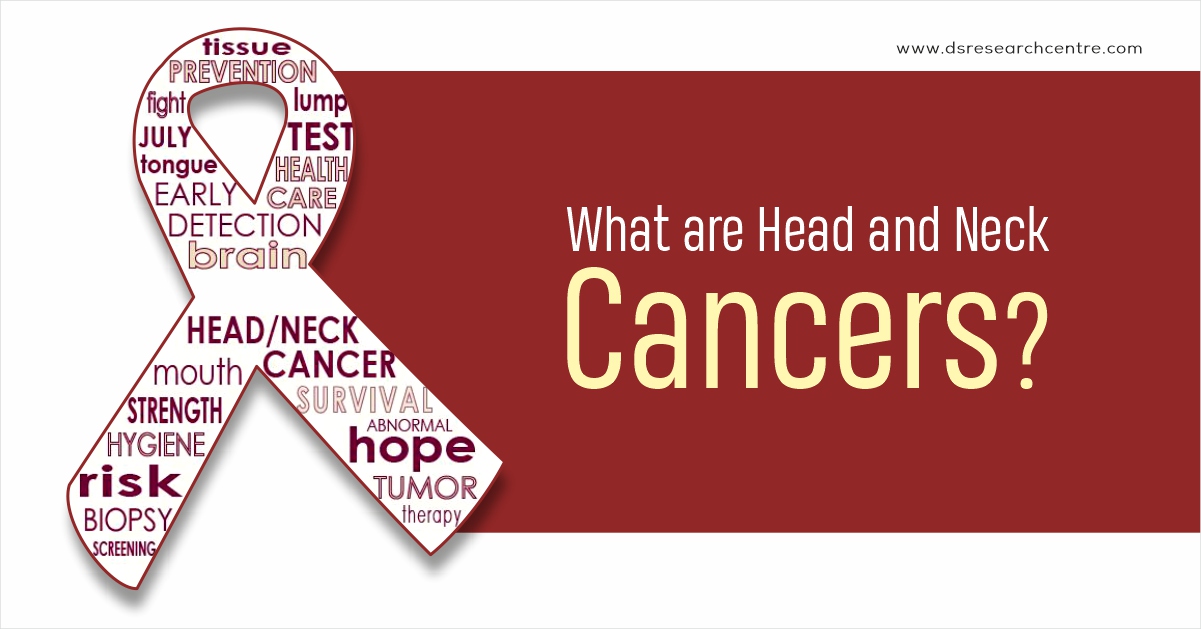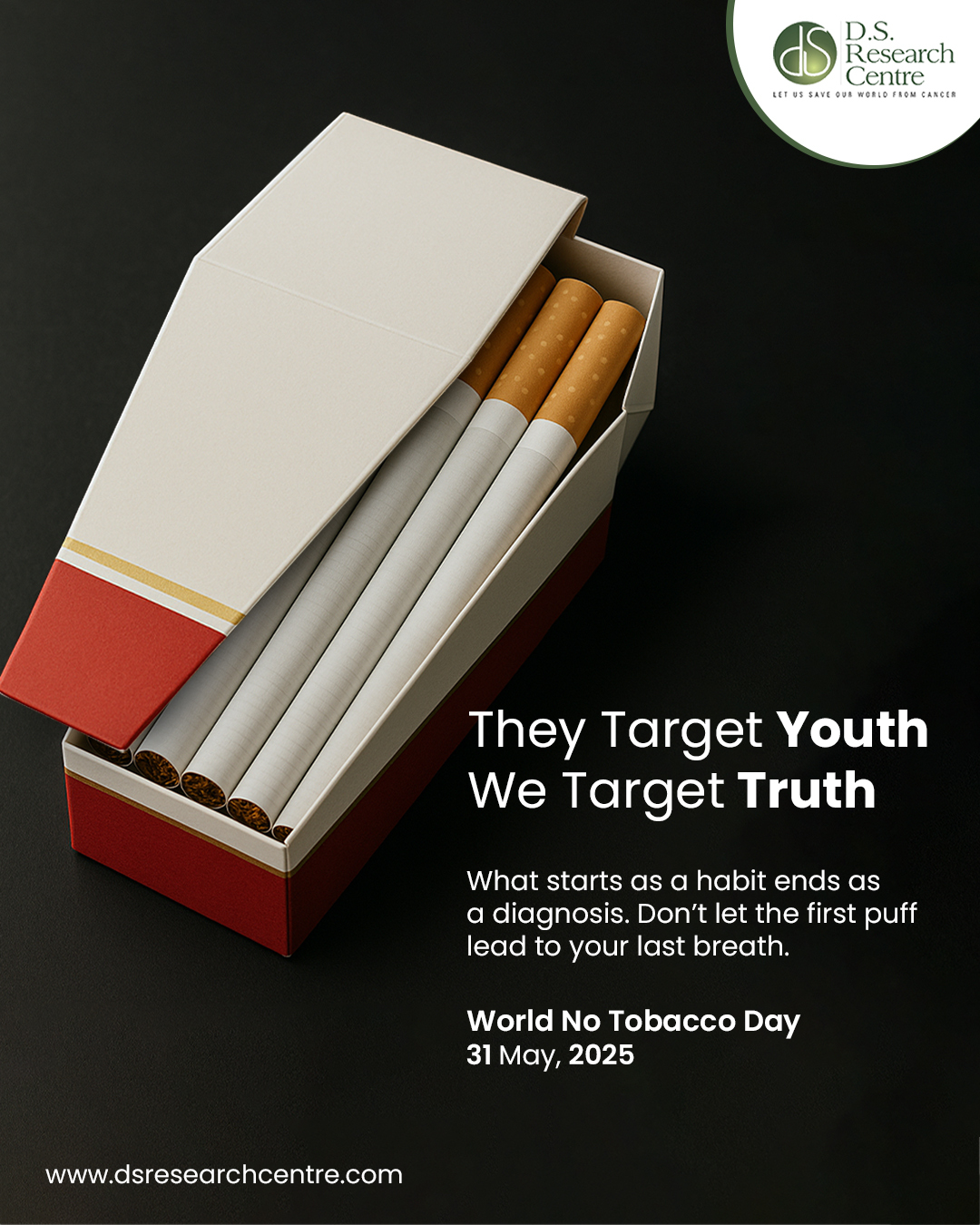Head and neck cancers (HNC) are malignant tumours of the upper aerodigestive tract including the oral cavity, nasopharynx, hypopharynx, and larynx. Squamous cell carcinoma constitutes more than 90% of HNC, the rest are adenocarcinomas, sarcomas, and lymphomas.
Head and neck cancers are the 6th most common cancers worldwide, the incidence increases with age and is more common in men than women.
HNC usually begins in the squamous cells that line the mucosal surfaces of the head and neck (inside the mouth, throat, and voice box) and also begin in the salivary glands, sinuses, muscles, and nerves in the head and neck.
WHAT CAUSES HEAD AND NECK CANCERS?
● Alcohol and tobacco use are the major risk factors for cancers of the head and neck.
All tobacco products including cigarettes, cigars, pipes, smokeless tobacco (chewing tobacco, or snuff), and drinking alcohol such as beer, wine, and liquor raise the risk of getting cancers of the mouth, throat, and voice box. People who use tobacco and alcohol are at greater risk of developing these cancers than people who use tobacco or alcohol alone.
● Betel leaf chewing (Paan)
Chewing betel leaf alone or with tobacco has increased risk of the oral cavity, oropharyngeal, hypopharyngeal, and laryngeal cancers because betel leaf contains areca nut which is carcinogenic causing Leucoplakia, oral sub mucus fibrosis(OSF)
Other factors include
- Occupational exposure
- Ill-fitting dental appliances and poor oral hygiene
- Long-time exposure to sunlight, UV light
- HPV (Human papillomavirus) is linked to about 70% of oropharynx cancers
- Epstein Barr virus infection is a risk factor for nasopharyngeal cancer and cancer of salivary glands.
- Underlying genetic disorders can increase the risk of developing precancerous lesions and cancers in early life.
HEAD AND NECK CANCER SYMPTOMS AND SIGNS
The manifestations of head and neck cancer depend greatly on the location and size of the tumour.
In the mouth, pharynx, and sinus, cancer causes
❖ A white or red sore that does not heal on the gums, tongue, or lining of the mouth
❖ Swelling in the jaw
❖ Unusual bleeding or pain in the mouth
❖ A lump or thickening
❖ Trouble speaking, chewing, swallowing, or breathing
❖ Pain in the throat and ears
❖ Blocked sinuses
❖ Sinus infections that do not respond to treatment.
❖ Headaches
❖ Pain and swelling around the eyes.
Otalgia is an often overlooked symptom usually representing referred pain from the primary tumour. Weight loss caused by perturbed eating and odynophagia is common.
DIAGNOSIS AND TREATMENT OF TUMOR RECURRENCE
- Clinical evaluation
- Biopsy
- Imaging tests and endoscopy
- CT / MRI
The main treatments for head and neck cancers are surgery and radiation. These modalities can be used alone or in combination with or without chemotherapy, immunotherapy, and targeted therapy. Managing recurrent tumours after therapy is complex and has potential complications.
Pain, difficulty in eating, choking on secretion, and other problems make adequate symptomatic treatment essential. Prognosis in head and neck cancers varies greatly depending on the tumour size, aetiology, and presence of regional or distant metastases.
FOLLOW UP AND REHABILITATION
Regular follow-up is very important after treatment for HNC to make sure that cancer has not returned and a second primary(new) cancer has not developed.
Depending on the location of cancer and the type of treatment, rehabilitation may include physical therapy, dietary counselling, speech therapy, and stoma care.
CANCER PREVENTION
Cancer Prevention is an action taken to lower the chance of getting cancer.
Different ways to prevent cancers include
✔ Lifestyle modifications, healthy eating habits,
✔ Avoiding things known to cause cancer,
✔ Taking medicines to treat a precancerous condition
✔ Quitting smoking and alcohol reduces the risk of oral cancer by 50%
Removing risk factors is critical, and all patients should cease tobacco use and limit alcohol consumption. Avoiding risk factors and increasing protective factors may lower the risk of cancer and also helps prevent disease recurrence in patients treated for cancer.
HEAD AND NECK AWARENESS - IT’S ABOUT FOCUSSING ON THE FIGHT








Posted on April 15, 2016
Posted on April 15, 2016